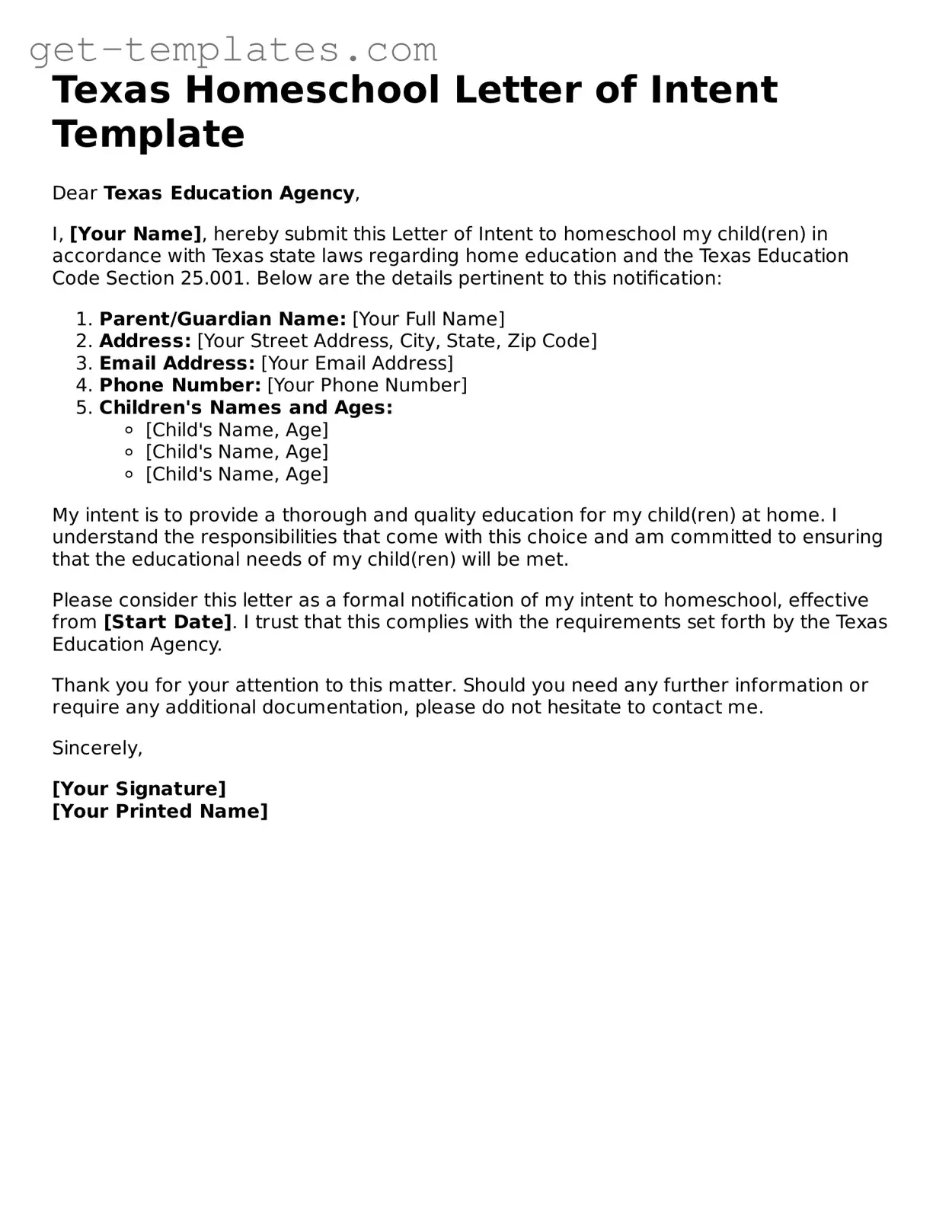What is the Texas Homeschool Letter of Intent?
The Texas Homeschool Letter of Intent is a formal document that parents or guardians submit to notify their school district of their decision to homeschool their children. This letter serves as a declaration of intent to provide a home-based education and is an essential first step in the homeschooling process in Texas.
Who needs to submit the Letter of Intent?
Any parent or guardian who wishes to homeschool their child in Texas must submit this letter. It is required for children who are of compulsory school age, typically between the ages of 6 and 19. If you are starting homeschooling for the first time or changing school districts, you should submit a new letter.
When should I submit the Letter of Intent?
It is advisable to submit the Letter of Intent before you begin homeschooling. While Texas law does not specify an exact deadline, doing so at least 30 days before the start of your homeschooling program can help ensure that you are in compliance with local regulations.
Your Letter of Intent should include the following information:
-
Your name and address
-
Your child's name and date of birth
-
The date you plan to begin homeschooling
-
A statement indicating your intent to homeschool
While there is no official form required, including this information will help ensure clarity and compliance.
Where do I send the Letter of Intent?
The Letter of Intent should be sent to the school district in which your child resides. You can typically find the appropriate contact information on the school district's official website. Some districts may allow you to submit the letter via email, while others may require a physical copy to be mailed or delivered in person.
There is no mandated format for the Letter of Intent in Texas. However, it should be clear and concise. A simple, straightforward letter that includes all necessary information will suffice. Many parents choose to draft their own letters, but templates are also available online for those who prefer guidance.
What happens after I submit the Letter of Intent?
Once you submit the Letter of Intent, the school district may acknowledge receipt of your letter, but they are not required to respond. You can begin homeschooling your child immediately after submitting the letter. It is important to keep a copy of the letter for your records in case any questions arise later.
Do I need to submit the Letter of Intent every year?
In Texas, you do not need to submit a new Letter of Intent each year unless you are changing school districts or if your child is transitioning to a different educational level. If you continue to homeschool your child in the same district, your initial letter remains valid.
What are the consequences of not submitting the Letter of Intent?
Failing to submit the Letter of Intent can lead to misunderstandings with your local school district. While Texas law does not impose strict penalties for not submitting the letter, it is important to comply with the notification requirement to avoid potential legal issues regarding your child's educational status.
